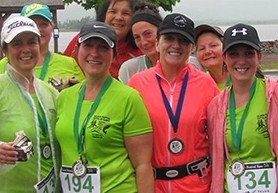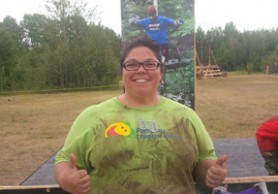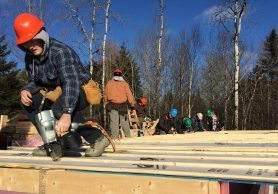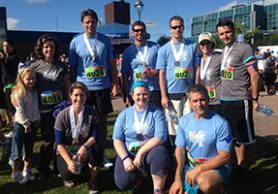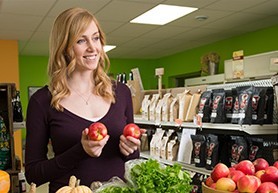Stories of inspiration
from people just like you...
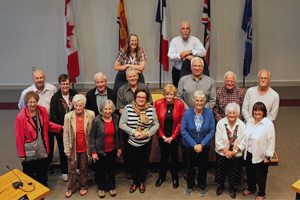

How one city’s residents are mobilizing to make their community age-friendly
Seniors have an important role to play in building better cities and a better province. And the city of Fredericton has been working hard to engage and mobilize the energy and knowledge of its seniors and community partners to create a better, more age-friendly community.
“If we’re going to be an inclusive city, we can’t leave anyone behind,” says Eric Megarity, Fredericton City Councillor and the Chair of the City of Fredericton’s Age-Friendly Community Advisory Committee. “And we have to change the conversation around what seniors contribute to the community.”
Fredericton’s first step towards becoming an age-friendly city began in the early 1990’s when seniors made over 100 recommendations to the city, the largest of which was to have a seniors’ centre built. As a result, in 2001, the Stepping Stone Seniors’ Centre came to fruition, which offers seniors ways to keep their bodies and minds healthy through a vast array of quality programs. The centre is now more than 600 members strong.
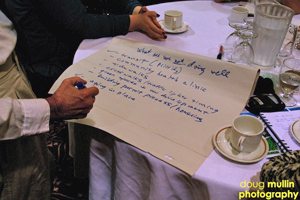 However, without a committee to build an action plan or do follow-up, many of the other recommendations were placed on the backburner. So, in 2012, the city took action and founded a seniors’ advisory group. With Eric acting as the liaison between the group and city council, it was decided that the city would host a World Café public engagement symposium and invite as many seniors and stakeholders as possible to get a renewed sense of what seniors wanted to see in an age-friendly community. This symposium, held in September 2014, had 200 hundred people attend and resulted in slew of additional recommendations.
However, without a committee to build an action plan or do follow-up, many of the other recommendations were placed on the backburner. So, in 2012, the city took action and founded a seniors’ advisory group. With Eric acting as the liaison between the group and city council, it was decided that the city would host a World Café public engagement symposium and invite as many seniors and stakeholders as possible to get a renewed sense of what seniors wanted to see in an age-friendly community. This symposium, held in September 2014, had 200 hundred people attend and resulted in slew of additional recommendations.
As the city reorganized its approach to meet the needs of its seniors, a resolution and terms of reference were passed by city council to announce the formation of the City of Fredericton Age-Friendly Community Advisory Committee. Eric recalls that he was given part-time staff but no budget, something that left him unfazed, “I said, we can work around that.”
Using the recommendations that resulted from the symposium, the committee crafted its action plan, which identifies three overarching priority areas:
- Universal Design, to address needs for improvements to housing, transportation, outdoor spaces and buildings.
- Vulnerable People, to address needs for community support, health services, communication, information, civic participation and employment.
- Being a Good Neighbour, to address needs for respect, social inclusion and social participation.
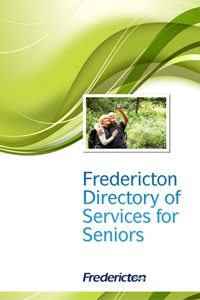 Fueled in part by the passion of the people on the new committee, many of whom are seniors, the group got down to work. One of the first things the committee did was apply for a New Horizons grant to create and print 5,000 copies of a seniors’ services directory. This directory lists services and programs for seniors within Fredericton and the surrounding area and is also available on the city’s website.
Fueled in part by the passion of the people on the new committee, many of whom are seniors, the group got down to work. One of the first things the committee did was apply for a New Horizons grant to create and print 5,000 copies of a seniors’ services directory. This directory lists services and programs for seniors within Fredericton and the surrounding area and is also available on the city’s website.
The idea for this directory came from the city’s Francophone community, who had formed their own Communauté Amie des Ainés (CADA) committee to promote age-friendly initiatives. Both the CADA committee and the city’s committee realized working together would be more effective than working separately, so CADA representatives were quickly invited to join Fredericton’s advisory committee. This allowed both sides to benefit from each other’s strengths and ideas, and helped avoid duplication of efforts.
“Our Francophone members offer great knowledge, experience and diversity to the committee,” says Eric. “It’s all about working together, working on common threads and engaging our citizens.” The collaboration also allows for the distinct cultural needs of each community to be respected while working towards these common goals. Louis-Philippe Albert, a member of both committees, notes that the inter-committee collaboration has been fruitful, “Relationships are very collaborative. For example, the municipality and its Anglophone organizations are supporting the Jeux de l’Acadie 50+, which we’ll be hosting soon.” He describes the committee as a ‘vehicle of communication.’
Eric notes that the committee has a broad range of talented people, including a representative from the Multicultural Association. “Every culture has its seniors and each culture treats and relates to their seniors differently,” says Eric. Having a multicultural perspective on the committee gives everyone a broader understanding of what an age-friendly community means for each cultural group.
In addition to multicultural collaboration, intergenerational collaboration is also key. “When you think of an age-friendly city, it’s also an intergenerational city working together. Not only between the cultures, but between the ages as well,” says Eric.
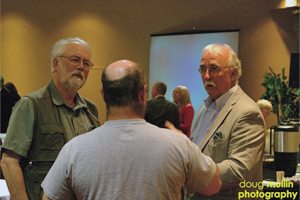 The collaborations the city has had with community partners have led to great successes for the committee. In addition to the directory, they have also created a fridge magnet that lists medications for emergency services providers. One of their sub-committees is working closely with the police department on how to address seniors’ safety. And the committee is partnering with Volunteer Greater Fredericton to secure a New Horizons grant for the Prime Time Volunteer program. This program will include the development of a toolkit for non-profit organizations on how to approach seniors to volunteer, as well as the organization of a fair, which will help to match seniors’ interests to volunteer opportunities. Volunteer work done by seniors isn’t just essential to a community; it also fosters strong social ties and feelings of belonging in the seniors, which contributes to their overall wellness.
The collaborations the city has had with community partners have led to great successes for the committee. In addition to the directory, they have also created a fridge magnet that lists medications for emergency services providers. One of their sub-committees is working closely with the police department on how to address seniors’ safety. And the committee is partnering with Volunteer Greater Fredericton to secure a New Horizons grant for the Prime Time Volunteer program. This program will include the development of a toolkit for non-profit organizations on how to approach seniors to volunteer, as well as the organization of a fair, which will help to match seniors’ interests to volunteer opportunities. Volunteer work done by seniors isn’t just essential to a community; it also fosters strong social ties and feelings of belonging in the seniors, which contributes to their overall wellness.
And that’s not all. The age-friendly committee is partnering with St. Thomas University’s Social Work students and MLA David Coon’s office to develop a Disaster Registry for seniors. They are also consulting with the City of Fredericton on the new municipal plan to ensure age-friendly elements are included in the plan. In addition, they produce a quarterly newsletter, are working on developing a ‘Good Neighbour’ initiative and are planning a Seniors’ Health Fair, currently planned for the spring of 2017!
To date, the biggest challenge has been myth-busting and changing the conversation around seniors. The committee continues to work hard to mobilize the skills, knowledge, experience and ideas of seniors to make the city better. Eric is excited for the future. He’s thrilled their hard work is getting noticed and that they are getting closer to receiving their age-friendly recognition status from the province of New Brunswick. He encourages other communities to think about age-friendly initiatives, especially given New Brunswick’s aging population and the resources that are now available for those interested in developing age-friendly communities.
“Everyone can do it. You don’t have to do it by tomorrow. If you don’t have the expertise, don’t reinvent the wheel. There are a lot of resources on this stuff that’s growing daily.” Association Francophone des Aînés du Nouveau-Brunswick, for example, has a guide on how to develop an age-friendly community and the Wellness Branch at the Department of Social Development will support municipalities to become age-friendly.
It is Eric’s hope that more cities and communities across New Brunswick will work towards becoming age-friendly. By working together, we can build a province that’s not only great to grow old in, but also great to grow up in. A place enriched by the incredible wisdom and talents of New Brunswick’s seniors.
Feeling inspired?
Well it's time to take the next step! Find the resources you need to start your wellness story here!





